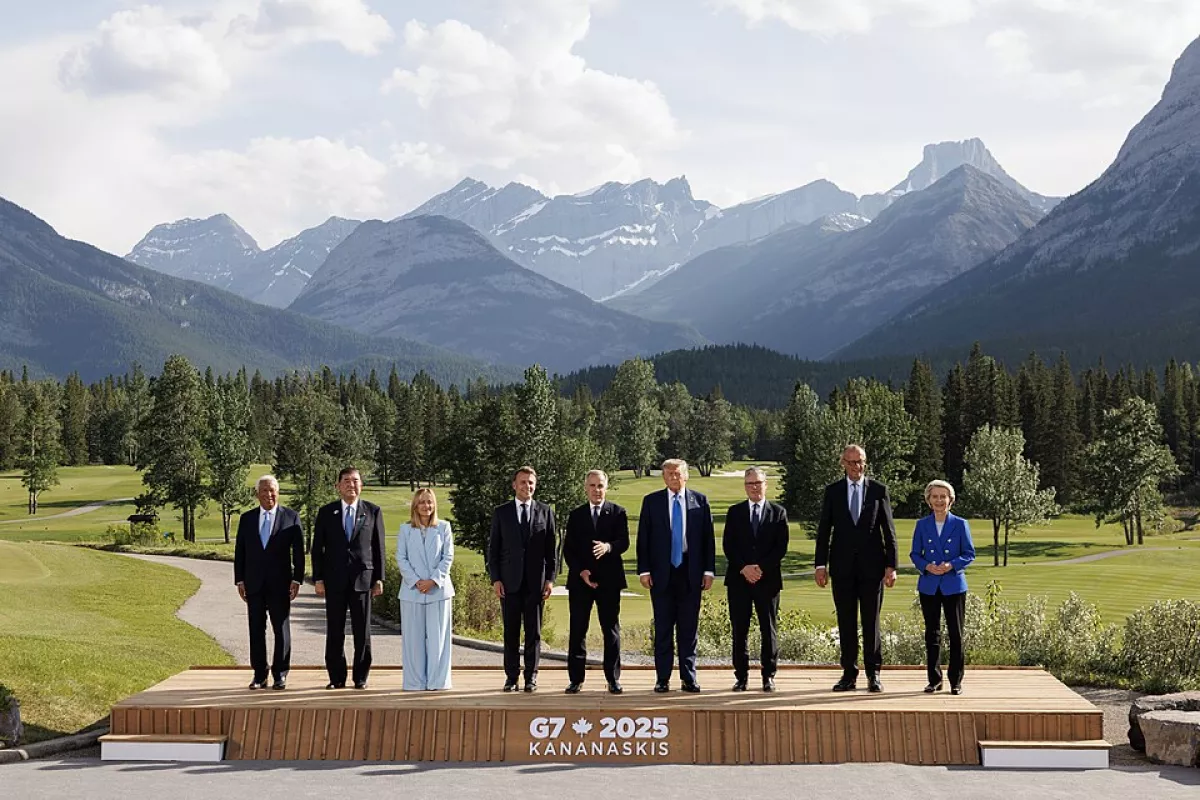G7 — A format without substance? On the outcomes of the Canadian summit
During the recent G7 summit in Kananaskis, Canada, major global news agencies reported that the host country abandoned plans to issue a strong joint statement on the war in Ukraine at the event’s conclusion. The decision was reportedly due to disagreements with the U.S. administration over the statement’s wording.
Sources within the Canadian government indicated that the White House opposed certain parts of the draft communiqué concerning Russia, fearing that a harshly anti-Russian stance could complicate ongoing negotiations with Moscow. As a result, the summit participants instead released joint statements on other key issues, including the situation in the Middle East, artificial intelligence, migration, and critical mineral resources. Notably, there was no unified statement on Ukraine.
The nuance is that President Donald Trump, who left the summit early on the evening of June 16, did not participate in the planned joint meeting the following day between the G7 leaders and Ukrainian President Volodymyr Zelenskyy. According to Zelensky’s Telegram post, he urged the summit participants to maintain the highest level of coordination in their joint efforts, including adopting a “tough” decision to cap prices on Russian oil.
Meanwhile, open sources report that after his conversation with Trump, German Chancellor Friedrich Merz also stressed the need to increase pressure on Russia. However, several media outlets cited remarks by Trump following a discussion with UK Prime Minister Keir Starmer, in which he claimed that anti-Russian sanctions cost the United States “billions and billions of dollars.” Trump reportedly also urged Europeans to be the first to impose sanctions.
As a result, Canadian Prime Minister Mark Carney limited his announcements to pledging approximately $1.5 billion in aid to Kyiv for the purchase of drones, ammunition, and armoured vehicles, along with a new $2.3 billion loan aimed at rebuilding war-damaged infrastructure.
Trump’s early departure from Canada deprived President Zelenskyy of the anticipated opportunity to discuss the potential acquisition of American weapons directly with him. Consequently, Zelenskyy’s appeal for greater “allied support” — particularly in terms of readiness for peace talks and securing an unconditional ceasefire through increased pressure on Russia — went unheeded. This was due, in part, to what Western media have noted as a lack of a “unified position on Ukraine” among G7 participants. Ultimately, Zelenskyy received only general reassurances of continued support and promises that Ukraine would be provided with “everything necessary to resist Russia.”

As a result, the lack of a meeting with Trump at the G7 summit was assessed by experts as a major blow to Kyiv’s interests, prompting the Ukrainian president to cut short his visit to Canada, even cancelling the expected press conference. Moreover, some news agencies have already reported that Zelenskyy may skip the upcoming NATO summit in The Hague, where the U.S. president is also expected to be absent.
In addition, according to Lithuanian Foreign Minister Kęstutis Budrys, the NATO summit in the Netherlands does not include on its agenda the issue of inviting Ukraine to join the Alliance.
“This issue is certainly not on the NATO agenda and nobody has formulated an expectation that there will be an invitation in The Hague, nor have we heard that from the Ukrainians themselves,” the Lithuanian foreign minister added.
What happened likely requires little further commentary—except perhaps for a brief retrospective to the year 2022, when Azerbaijani President Ilham Aliyev, responding to a question at an international forum at ADA University, emphasised that any advice to Ukraine should begin with a firm refusal to accept—under any circumstances—the violation of the country’s territorial integrity, and to never reconcile with occupation, relying solely on its own resources rather than on resolutions and declarations from international organisations, which he said hold “no real value.”
However, as we are now witnessing, Kyiv placed great trust in its external partners—primarily European—who had confidently and unequivocally promised to support Ukraine “for as long as it takes.” The recently concluded G7 summit in Canada has made clear what that really means—and who really stands where when it comes to Ukraine. The upcoming NATO summit in The Hague will likely underscore that reality even further.
In this context, another rather striking angle comes to the surface. Has the so-called “Group of Seven”—a coalition of geopolitical players, some of whom have been unable to resolve even their own domestic issues for years—become a redundant element in global politics?
This is hardly a rhetorical question. In light of the latest G7 summit, many observers have asked whether the participants truly travelled all the way to North America simply to endorse, in a separate document—signed even by Donald Trump—the assertion that Iran must never be allowed to obtain nuclear weapons (albeit alongside a call for de-escalation in the Middle East and a ceasefire in Gaza). Or was the trip made merely to reaffirm the importance of a secure Indo-Pacific region and the need for constructive relations with China—phrased, moreover, in a highly vague manner that merely urges Beijing to “refrain from distorting market balance and harmful overproduction”?
And really—was that all?
If the answer is yes, then one must ask: has this “Group of Seven” become a link with zero format? And if so—who needs it?








